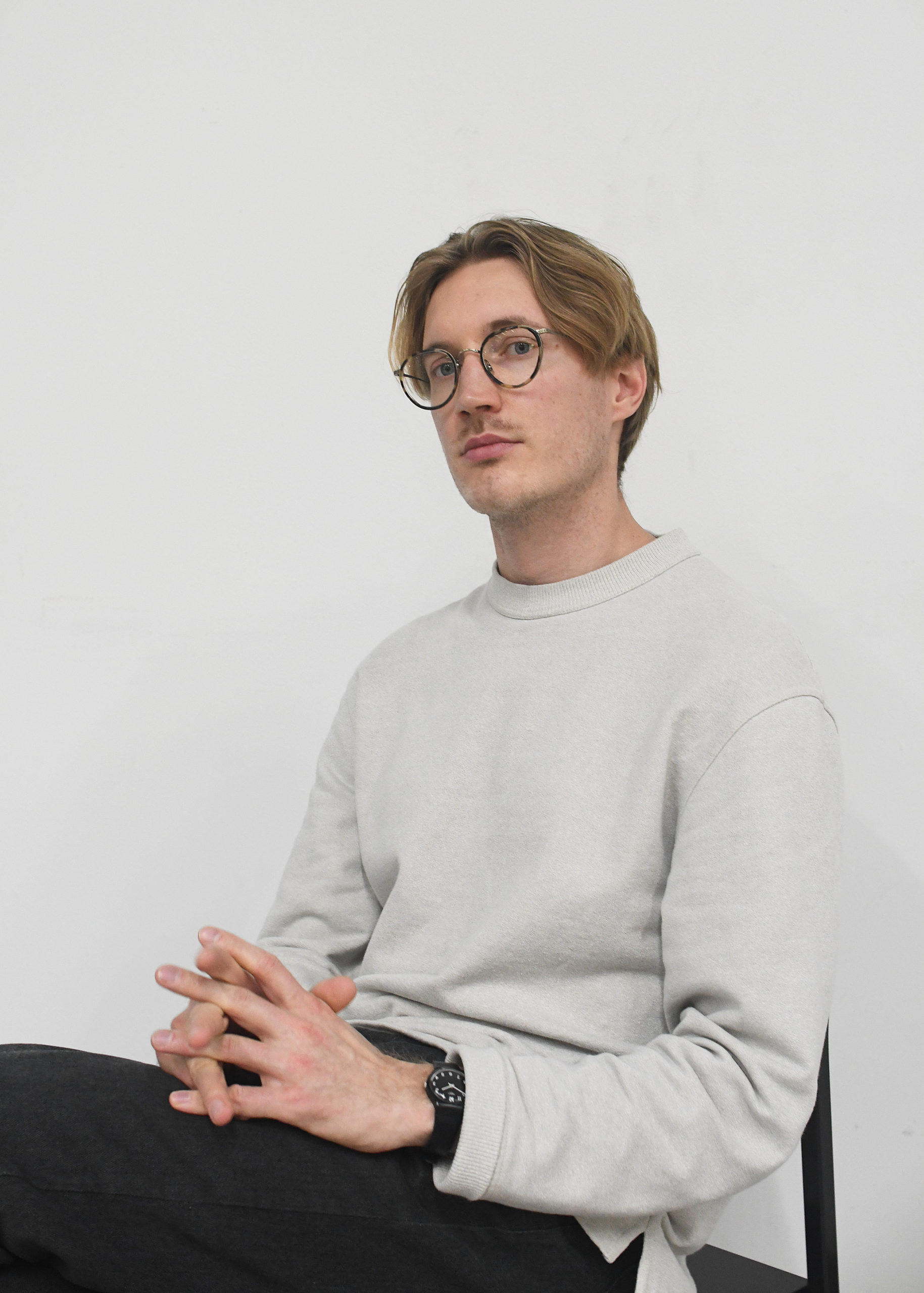
In the continuum of expertise: Jenni Roininen and Tatu Laakso
One thing is certain: things change. It is also certain that as time passes, our knowledge and skills develop, grow and are passed on to new generations. We are all part of a never-ending canon of development and change, in which each one of us is a master to someone and an apprentice in relation to something else. In this series of stories, people in different stages of their careers reveal their relation to work, expertise and life.
Wood has been present in the lives of both Jenni Roininen, creative director at Nikari, and Tatu Laakso, who is finishing his master’s degree at Aalto University. Tatu’s Grandfather was a master builder who designed and built several houses, and Jenni says to have always lived in a house annexed to a carpenter’s shop, a place to master a circular or band saw. “Wood calls for experience as a material, and it cannot be fully explored on a computer screen,” Jenni says.

Wood is a key element in the lives of these designers, today perhaps more than ever. Jenni Roininen and Tatu Laakso handle the material daily and keep learning its features. You might think wood is an obvious choice for a design material, but that was not the case when Jenni started at Nikari ten years ago. “At that point a major concern was whether solid wood would ever again be a material for design, and top design in particular. It’s unbelievable that this was the situation just ten years ago – nobody will question wood’s value in design today,” Jenni says. About the same time, Tatu began his studies at the Lahti Institute of Design, starting from media studies and continuing to packaging design. He was more interested in what was inside packaging, however. “I did my exchange studies in an industrial design programme in Canada. There I got a chance to work in a wood shop and make my first furniture. After returning to Finland, I was allowed to choose a furniture project as my diploma although I had majored in packaging design. It’s great that they were so flexible,” Tatu says.

We learn and inherit passion from the previous generations, and we pass on that passion to the next generations. Tatu’s early career was significantly influenced by designer Timo Ripatti with whom Tatu did his internship. “Timo taught me what designer’s work is all about, all the aspects it includes, and most of all, how to work as a freelance designer and furniture designer,” Tatu says, and continues: “Half joking, Timo said to me that this career does not pay off – but I know Timo enjoys his work, and he probably meant that this is not an easy journey.” A person to significantly influence Roininen’s career choice was Yrjö Kukkapuro. In the first years after graduation, Jenni worked with product development at Avarte, but already before her education at the age of 18, she was Kukkapuro’s assistent, and having seen how he worked, she decided to apply to the University of Art and Design Helsinki. The founder of Nikari Kari Virtanen had equal impact on her. Jenni met Kari for the first time while studying at the University of Art and Design. “I attended a lecture by Kari and visited Fiskars on an excursion in mid 1990s. Kari took us to the place where our workshop was to be: a dark, torn-down basement. I remember vividly Kari’s enthusiasm about the place, how amazing the workshop was going to be, and I was thinking he must be absolutely bonkers,” Jenni says, laughing. “But, alas, that’s where we work now.”

Tatu is doing his master’s degree in Otaniemi, Espoo, where the Aalto University School of Arts and Design was moved in 2018. Jenni studied in the same school when it was located in the Arabianranta district of Helsinki and known as the University of Art and Design Helsinki. Now the different design disciplines are located physically close to each other, and this enables better and more agile interdisciplinary operation across the programmes. Cooperation is indeed the driving force and enabler of good design. “The manufacturing industry, engineers and sales and marketing experts are all important for a designer to do their job well. A designer is as good as their backup team,” Jenni concludes.

Tatu met Timo Ripatti again about one year after his internship. When Tatu told Ripatti he was still fixing to become a freelance designer, Ripatti said: “See, I told ya!” “When you’re young and getting started in your career, you’re sensitive to what people say, and in a way that is a good thing, because that makes you want to show them. I remember hearing in school that in Finland less than ten persons make a living in furniture design,” Jenni says, and Tatu continues: “I guess the kicks are in the challenge.”